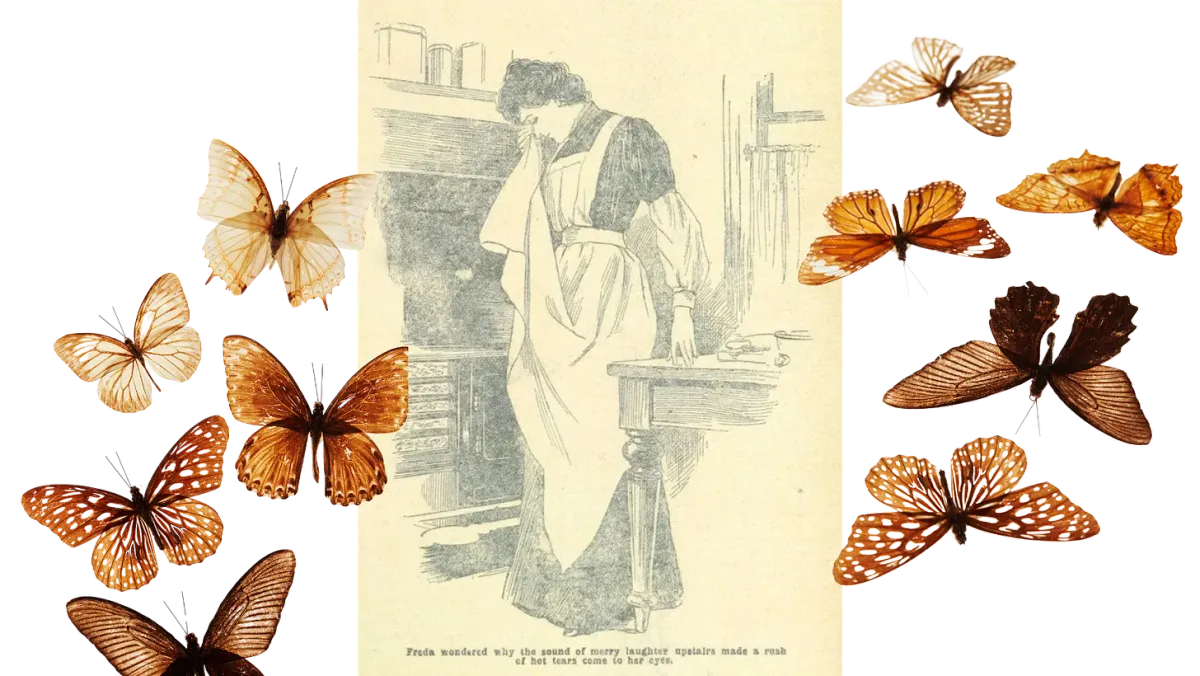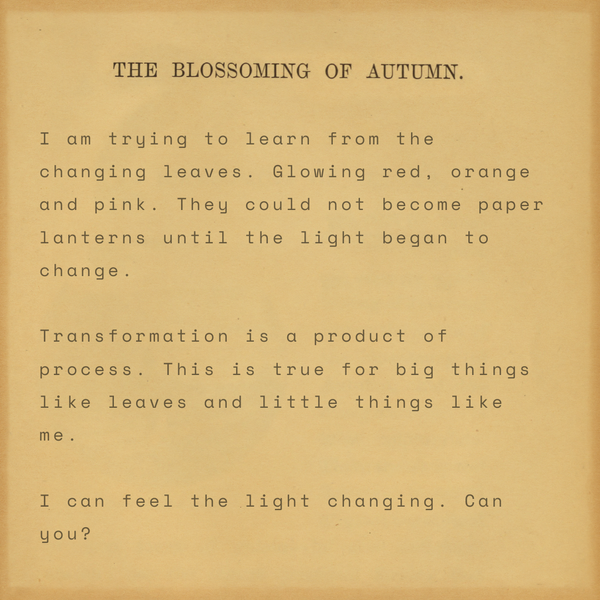A Concise Chronicle of a Woman Who Cried at Home
What has crying in the home looked like over the centuries?

I’ve been contemplating an odd question lately,
“What has crying in the home looked like over the centuries?”
The answer’s got to be fairly straightforward - crying in the home has always looked like crying in the home. And you know what? That’s probably right. I spent a few days trying to prove it right. The fact that sobbing-at-home (not to be confused with staying-at-home) has always been as it is now shouldn’t have kept it from ethnographic inquiry. Surely at some point in the millennia someone sat down to write a historical account about domestic tears. And you know, someone probably has. But either the document hasn’t survived or its digital form doesn’t have good enough SEO to be found online. And honestly, aren’t those two kind of the same thing?
We read about crying in the home in literature. Women collapse in grief in their hallways, sob into bedposts, weep over embroidery while flames dance in the fireplace. And it’s not that that kind of crying never happens in real life! I’ve certainly collapsed in a hall or two. But tears in literature are part of a constructed scene. For the most part, tears cried in private have little of the constructed or scenic about them. I want an honest account of weeping while home and it’s fairly tough to find.
With a few notable exceptions like Laurel Thatcher Ulrich, historians haven’t been very preoccupied with the domestic. Even when they are interested, primary sources are not abundant. Take food history. To a large extent food historians only know about historical fare because menus were recorded in contemporary records to give texture to the truly vital thing happening around tables - important conversations held by important people. Domestic life has always been considered vital - mainly because it fills the tables with food and, through reproduction, the seats with men. But the things that happen in the home, and the traditionally female population that makes them happen, have never been considered important.
How did ancient Roman women cry in their domus? Did they shed tears openly in courtyards, retreat to the bedroom, save their tears for an altar full of household gods? Did Aksumite women stand beneath stone lintels and look over the landscape as they wept? Did they trace the astral signs of the disc and crescent carved near their doorways as they cried? What about the Celtic woman in her round house? Where did she cry without a corner to crawl into? Did she lean against the straw and mud walls to catch her breath? Did the smoke from the fire in a home without a chimney give her cover? I can’t find the record. Who would have written it?
Other tears were deemed worthy. According to Tom Lutz’s book Crying: The Natural and Cultural History of Tears, “The earliest written record of tears is found on Canaanite clay tablets dating from the fourteenth century B.C. One of the fragments tells the story of the virgin goddess Anat, the sister of Ba'al, as she hears the news of his death. Quite naturally, she weeps at the news.” The tablet says that when Anat cries she sates herself with weeping and drinks her tears like wine. This is also the first written depiction we have of tears bringing someone back to life. Ba’al is revived by the drops from his sister’s eyes. Disney’s Tangled has ancient Canaanite mythology to thank for Eugene’s revival.
Tears make up the most moving moments of the foundation of the western canon too. In The Iliad, Achilles and Priam “wept close” over their losses and “the sound of their mourning moved in the house”. Crying functioned as proof of manly devotion when shed over a worthy warrior. Tears were so important to religious devotion in the Middle Ages, inventors engineered automata that could weep! My favorite is a Virgin Mary automaton with a bowl of water in her head. The water was full of fish. As the fish swam, they splashed water out of her eyes. The congregation knew she was a Manufactured Mary. Still, her tears were a physical manifestation of their faith.
We don’t really know why we cry. Some scientists speculate it’s an evolutionary protection. When our eyes fill with tears they are blurred and so we are vulnerable. Our observably diminished eyesight lets others know we are seeking appeasement rather than threatening attack. In this theory, tears also function as a silent signal to those around us that we need help. Another theory is that the first humans were very fire dependent and all that smoke from all those fires produced reflexive tears.
Scientists speculate that “as humans evolved the smoke possibly gained a strong association with the loss of life and, therefore, sorrow.” This theory certainly gives more meaning to the pyres so many cultures use to burn their dead. Tears aren’t just a defense or a sign of smoke-filled sorrow. They can also be aggressive. Crocodile tears are shed to mask malicious motivation. We get the term from actual crocodiles! When they open their jaws all the way to swallow prey, their lacrimal ducts are compressed and tears are produced. Crocodile tears have teeth; tears can be shed to cause harm.
Blurred eyes, the effects of smoke and machinated malice aren’t enough to explain the fullness of tears. Cultural Historian Thomas Dixon said, “Tears are intellectual things. They are produced both by thoughts and the lacrimal glands.” Tears might be the only physical symbolism we produce. If that’s true then women are highly symbolic creatures.
The German Society of Ophthalmology collated scientific studies on crying and discovered that, “the average woman cries between 30 and 64 times a year, and the average man cries between 6 and 17 times a year. Men tend to cry for between two and four minutes, and women cry for about six minutes. Crying turns into sobbing for women in 65% of cases, compared to just 6% for men.”
It’s perhaps notable that none of these differences exist between the sexes in childhood. I can’t speak for men, but as a woman I think those numbers are a bit low. A year where I only cried 64 times would be a fairly dry turn around the sun.
Someday a Historian of Emotion and Domesticity may want to know what it looked like when 21st century women cried in their houses. If they don’t, they should. While I cannot offer a definitive survey of the subject, I can record the nature of my homebound cries. So in the spirit of historical contribution, I offer my own fragment of experience.
A Concise Chronicle of a Woman Who Cried at Home
I’ve lived in many homes. Most had some sort of outdoor space - a yard or a stoop. All of them have had a kitchen, a living room, at least one bedroom and at least one bathroom. A few had laundry rooms. Two of them had stairs. One had an attic I could access. I never cry in attics, the floors are too thin.
I try not to cry outside. A private person, I don’t like my neighbors to hear my gulps and gasps. It’s best if they just know me as the woman who forgets to bring her trash cans up from the street every Tuesday. When I do cry outside, I sit on the back doorstep. I can feel a breeze while ready-retreat lays open at my back. Doorstep cries are gentle. Crying outside is often nostalgic, and it’s usually a lament for what is lost, not what is or may be. When crying outside, I dry my face with the bottom of my shirt or dress.
Kitchens are made for cooking and for crying. While the entire space is hearty enough to hold a howl, the kitchen sink is made for sobs. I’ve cried there while washing dishes. But I also lean over it when there is no work to be bundled with the weeping. When I cry into the sink, the fount becomes a font. I don’t know if tears are holy water but if they aren’t then, what is? My kitchen sink accepts my tears of sorrow, frustration, and fear. They go down the drain along with the other crumbs. When crying over the sink, I dry my face on a paper towel or a dish towel with a cheerio attached to it from the last time the table was wiped down.
Living room cries are often followed by laughter. I’m more likely to be witnessed in my living room and so less likely to grieve there. When I cry in the living room it is with gratitude, joy, board game induced hilarity or nostalgia. It’s a place for little tears that fill my eyes but don’t flood them. Sometimes I cry over the book I’m reading. Both the floor and couch are comfortable for living room mists. When crying in the living room, I rarely get wet enough to need to dry my face. Sometimes there is a single tear and I wipe it away with the knuckle of my index finger.
My husband and I share a bedroom and so the crying that happens there is shared too. I cry in my bedroom when the tears can be comforted. Or at least when I wish they could be. I’ve cried in bed before, blankets held up to my mouth, but I don’t advise it. Soggy sheets are just so depressing. Mostly I sit on the floor and lean against the wall when I cry in my room. My bedroom is for tears of mortification, old grief and new fears. Bedroom cries are sustained and soft. I’m not left hiccuping after a cry in there but I am usually left drained. When crying in the bedroom, I dry my face with the comforter, a pillowcase, the odd single sock.
Bathrooms are for squalls. The kind of keening that is best kept behind a quickly turned lock. Bathroom floors should be kept clean for lots of reasons, not the least of which is that sometimes I’m curled up on that floor. Heaving dry sobs, face on the bare tile, my arms wrapped further around my soft stomach than I knew they could go. Bathroom tears stream from springs of fresh grief, permanent ends and intimate discord. I imagine Thetis cried on a bathroom floor before wailing her threnody for Achilles. When crying in the bathroom, I don’t dry my face.
I do not cry in the laundry room because I prefer to limit my time there in all circumstances.
There’s no sobbing on the stairs. No soft weeping either. Stairs are for tears on the move. I cry on the stairs as I move laundry baskets up them, as I vacuum them or run down them late for school pick-up again. Stair crying is about missed opportunity, frustrated hopes and feelings of misuse. It is not productive crying but it is cathartic. When crying on the stairs, I dry my face with my sleeve.
Being well-versed in the work of weeping, I’ve cried in other spots of my homes. Head-down on the kitchen table is a favorite place to sniffle, halls are nice for a quick whimper, closets are an acceptable stand-in for bathroom floors although the shoes tend to get in the way, one time I cried beside our mailbox. My tears have never brought a god back to life, but they’ve fallen on the past and reanimated it for a moment. I cry in devotion and I cry in abdication. I’ve tasted my own tears, like wine, like a sacrament. They’ve baptized me and condemned me.
Once in a great while the tears come before a feeling. I’m working, writing or walking and suddenly my eyes are wet. The emotion follows, ushered in by my lacrimal glands. Antecedent tear drops are a physical reminder that my emotions beat as surely and constantly as my heart. The tears force me to stop to feel their pulse.
There is no definitive account that tells me what the Roman woman’s knees felt like as she wept before her altar. I don’t know what the Aksumite woman saw through her blurred eyes as she stood in her doorway and cried. I am not sure if the Celtic woman was open with her tears in her open home. But when I cry over a hurt child, a lost parent, the aching heart of a friend, I feel a sorrow that bends back through time and holds all women in its loop.
When I weep with fearful hope, I feel the tremulous lift that’s sustained my sisters through so many dark centuries. And when I am baptized with tears of joy, I am reminded that the past, present and future is a river of happiness as well as sadness. In the absence of a written record, I have a well of tears filled by the women who came before me. It will never run dry.




